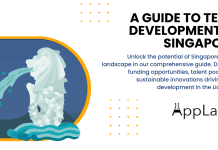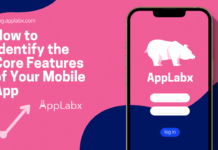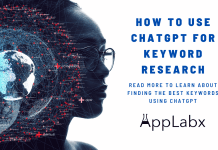Key Takeaways
- GEO and SEO serve different platforms—GEO targets AI-generated content visibility, while SEO focuses on search engine rankings.
- Integrating GEO with SEO enhances brand presence across SERPs and generative engines like ChatGPT and Perplexity.
- Businesses must adopt structured, prompt-ready content to stay competitive in an AI-first digital landscape.
In 2025, the digital landscape is undergoing one of the most significant transformations since the birth of traditional search engines. As artificial intelligence reshapes the way users search, discover, and interact with online content, a new discipline has emerged alongside classic Search Engine Optimization (SEO): Generative Engine Optimization (GEO). While SEO has long been the cornerstone of online visibility, GEO is quickly gaining prominence as brands and marketers seek to optimize their content for generative AI platforms such as ChatGPT, Google’s Search Generative Experience (SGE), and other large language model (LLM)-powered engines.

The rise of GEO does not signal the end of SEO. Instead, it introduces a powerful complement—one that focuses on visibility within AI-generated responses rather than solely on traditional search engine results pages (SERPs). SEO continues to be critical for ranking on Google, Bing, and other engines by optimizing web pages for crawling, indexing, keyword relevance, user experience, and domain authority. GEO, on the other hand, is about ensuring content is recognized, cited, or paraphrased by generative engines that respond to user prompts with synthesized answers.
This distinction has become more vital than ever in 2025. As users increasingly engage with AI assistants, voice-activated search, and conversational interfaces, the competition for digital visibility has expanded beyond just blue links on SERPs. Businesses must now consider how their content performs in both traditional and generative environments. For instance, while a blog post might rank on Google’s first page, it might fail to be referenced by an AI assistant if it lacks structured formatting, authoritative tone, or clear factual content—three key components of GEO.
Moreover, generative engines are not simply repackaging search engine results; they are synthesizing vast data sources to answer user queries directly, often omitting links altogether. This presents a new challenge: how can brands remain visible when AI answers bypass websites entirely? The answer lies in mastering both SEO and GEO as complementary strategies—each with its own set of rules, technical requirements, and content considerations.
In this comprehensive blog post, we will explore the key differences between SEO and GEO, demystify how each functions in the current digital ecosystem, and provide actionable insights into how the two strategies can work in tandem to future-proof your content marketing efforts. From content structure and keyword usage to ranking metrics and AI visibility, understanding the dual optimization approach is essential for marketers, content creators, and businesses aiming to thrive in the era of AI-enhanced search.
By the end of this article, you’ll not only grasp the foundational contrasts between GEO and SEO but also gain a strategic framework to implement both effectively. As the digital economy leans deeper into AI integration, those who adapt and align their strategies with this dual focus will lead the next wave of search dominance.
But, before we venture further, we like to share who we are and what we do.
About AppLabx
From developing a solid marketing plan to creating compelling content, optimizing for search engines, leveraging social media, and utilizing paid advertising, AppLabx offers a comprehensive suite of digital marketing services designed to drive growth and profitability for your business.
At AppLabx, we understand that no two businesses are alike. That’s why we take a personalized approach to every project, working closely with our clients to understand their unique needs and goals, and developing customized strategies to help them achieve success.
If you need a digital consultation, then send in an inquiry here.
GEO vs. SEO: Key Differences and How They Work Together in 2025
- What is SEO in 2025?
- What is GEO (Generative Engine Optimization)?
- GEO vs. SEO: Core Differences
- How GEO and SEO Complement Each Other
- Future Trends in GEO and SEO Integration
- Implementation Tips for Businesses in 2025
- Common Challenges and How to Overcome Them
1. What is SEO in 2025?
In 2025, Search Engine Optimization (SEO) continues to be a foundational strategy for driving organic traffic to websites, but it has evolved significantly from its earlier iterations. With advancements in AI, machine learning, and user behavior analysis, SEO now goes far beyond basic keyword stuffing or backlink building. Instead, it prioritizes semantic relevance, user experience, structured data, and AI-readiness. Below is a detailed breakdown of what SEO entails in 2025, including key components, practices, and examples.
Core Pillars of SEO in 2025
SEO in 2025 is structured around three major pillars:
| Pillar | Focus Area | Key Outcomes |
|---|---|---|
| On-Page SEO | Content, metadata, keyword use, internal linking | Improved content relevance and crawlability |
| Off-Page SEO | Backlinks, digital PR, brand mentions | Domain authority, trust signals |
| Technical SEO | Site speed, indexing, structured data, mobile UX | Enhanced crawlability, better performance |
A. On-Page SEO in 2025
Modern on-page SEO emphasizes user intent, semantic optimization, and AI-compatible structuring.
- Semantic Keyword Optimization
- Use of latent semantic indexing (LSI) and NLP-driven terms
- Tools like Surfer SEO and NeuronWriter help map keyword clusters
- Content Experience Optimization
- Scannable formatting with headers (H2/H3), bullet points, and visuals
- Fulfilling EEAT (Experience, Expertise, Authoritativeness, Trustworthiness)
- Example: A health blog includes credentials of a licensed doctor to boost trustworthiness
- Internal Linking Strategy
- Contextual linking across semantically relevant pages
- Helps with crawl depth and distributes authority
B. Off-Page SEO in 2025
Off-page SEO focuses on building trust, authority, and digital presence beyond your own domain.
- Quality Over Quantity in Link Building
- Emphasis on authoritative links from relevant sources
- Example: A fintech blog gains a backlink from Forbes Finance
- Digital PR and Brand Mentions
- Brand signals (even unlinked) influence topical authority
- Co-citations and co-occurrences recognized by algorithms
- AI-Aware Link Building
- Links from sources frequently cited by generative engines boost dual visibility (GEO + SEO)
C. Technical SEO in 2025
The technical backbone of SEO is critical, especially as AI crawlers, mobile-first indexing, and SGE previews evolve.
- Core Web Vitals 2.0
- Google now includes Interaction to Next Paint (INP) as a ranking signal
- Faster interaction times = higher UX scores
- Structured Data for AI Readiness
- Use of Schema.org, FAQs, HowTo, Article, Product, and Video schemas
- Helps both traditional search and generative engines understand context
- Mobile-First and Voice Search Optimization
- Mobile usability is non-negotiable
- Pages designed for conversational queries (e.g., “What’s the best travel credit card in Vietnam?”)
- IndexNow and Instant Crawling
- Adoption of IndexNow API to notify search engines of updates in real-time
D. SEO Content Strategy in 2025
Content is no longer just about keywords—it must be intent-driven, structured, and aligned with search journeys.
- Search Intent Mapping
- Align content types with stages of the user journey
- TOFU (Top of Funnel): Informational blogs
- MOFU (Middle): Comparison guides
- BOFU (Bottom): Product pages
- Align content types with stages of the user journey
- Example Matrix: Matching Content Type with Search Intent
| Search Intent | User Query Example | Content Type |
|---|---|---|
| Informational | “How does blockchain work?” | Blog post, explainer video |
| Navigational | “Coinbase login” | Landing page |
| Transactional | “Buy Ethereum in Singapore” | Product page, CTA-optimized |
| Commercial | “Best Ethereum wallets 2025” | Comparison list, reviews |
E. AI and Automation in SEO Tools
AI tools in 2025 are essential for research, optimization, monitoring, and automation.
- Popular SEO Tools in 2025
| Tool | Primary Use Case |
|---|---|
| Surfer SEO | AI-driven content optimization and brief building |
| Jasper AI | Long-form content creation with SEO alignment |
| NeuronWriter | NLP optimization for SERP alignment |
| Ahrefs / SEMrush | Competitor analysis, backlink audits, rank tracking |
| Screaming Frog | Technical crawling and issue detection |
| ChatGPT Plugins | Content rewriting, keyword ideation, structure recommendations |
F. New SEO Trends in 2025
- Search Generative Experience (SGE) Integration
- Content optimized for appearing in AI-generated answer panels
- Includes structured summaries, tables, and citations
- Zero-Click SERP Preparedness
- Optimize content for snippets, knowledge graphs, and AI boxes
- Include direct answers within the content (TL;DR sections)
- Visual SEO
- Optimize for visual assets: Web Stories, short-form videos, and AI-friendly infographics
- Use descriptive filenames, alt-text, and Schema for visual indexing
- Multilingual SEO with AI Translation
- Target multiple language markets using human-edited AI translation
- Example: One article published in English, German, and Vietnamese to expand reach
G. Example: SEO in Action (2025 Scenario)
A digital marketing agency optimizes a blog post titled “Top AI Tools for E-Commerce in 2025”:
- Uses Surfer SEO to match SERP NLP terms
- Structures content with H2s and embedded schema
- Adds expert commentary and outbound links to credible sources
- Embeds product comparison charts with structured data
- Gets cited by both Google SGE and Perplexity AI in generative responses
Outcome:
- #2 rank on Google SERP
- Featured in ChatGPT answers via OpenAI browsing tool
- 30% increase in organic traffic and 12% AI citation visibility
SEO in 2025 is not just about satisfying search engine crawlers—it’s about creating intelligent, high-quality, structured content experiences that are optimized for both human users and AI-driven engines. As traditional search converges with generative interfaces, mastering modern SEO is non-negotiable for sustained digital visibility.
2. What is GEO (Generative Engine Optimization)?
Generative Engine Optimization (GEO) is a cutting-edge digital marketing strategy that emerged in response to the explosive growth of AI-powered generative engines such as ChatGPT, Google’s Search Generative Experience (SGE), Bing Copilot, Perplexity AI, and others. Unlike traditional SEO, which optimizes content for web search engines, GEO focuses on enhancing the visibility and relevance of content within AI-generated responses, conversational interfaces, and LLM-driven platforms.
In 2025, GEO has become a core necessity for forward-thinking brands that want to appear as authoritative, cited, or summarized sources in AI outputs. It’s not just about being ranked—it’s about being referenced, trusted, and surfaced by generative models in real time.
A. Understanding Generative Engines
Generative engines differ significantly from traditional search engines:
| Type | Function | Examples |
|---|---|---|
| Search Engines | Index and rank web content for search results | Google, Bing, DuckDuckGo |
| Generative Engines | Generate human-like responses to user prompts | ChatGPT, Gemini, Claude, Perplexity AI |
- Search engines return ranked links and metadata.
- Generative engines synthesize answers, using content from multiple sources to generate original responses without always linking to them directly.
B. Core Objectives of GEO in 2025
GEO is designed to help your content:
- Be referenced in AI-generated answers
- Serve as a primary knowledge source for generative models
- Increase brand awareness in zero-click environments
- Enhance trust and topical authority with AI engines
C. Key Components of Generative Engine Optimization
GEO involves optimizing for how large language models (LLMs) consume, interpret, and generate content.
- AI-Readable Structure
- Short, fact-rich paragraphs
- Clear H2/H3 hierarchies
- Bullet points and numbered lists for skimmability
- High-Factual Density
- Answer-focused writing: concise, verifiable facts
- Structured data: tables, timelines, product specs
- Named Entity Optimization
- Brand names, product names, and locations clearly labeled
- Improves recognition in AI embeddings
- Schema & Structured Data Markup
- Use of FAQ, Article, Person, Product, Event schemas
- Ensures content is digestible by crawlers powering LLM training
- Citation-Worthy Formatting
- Present content in a way that generative engines want to cite:
- Use of definitions, statistics, quotes, and charts
- Clear attribution to authors or organizations
- Present content in a way that generative engines want to cite:
D. Comparison Matrix: GEO vs. Traditional SEO
| Feature | SEO | GEO |
|---|---|---|
| Target Platform | Search engines (Google, Bing) | Generative engines (ChatGPT, Perplexity, SGE) |
| Optimization Focus | Rankings, traffic, CTR | Citations, AI visibility, response inclusion |
| Content Format | Long-form, keyword-rich | Short-form, AI-scannable, structured |
| Key Metrics | Rankings, backlinks, traffic | Mentions in AI responses, trust score, source ranking |
| Output Destination | Search engine results pages (SERPs) | AI-generated responses (chat, summaries) |
| Content Discovery | Web crawling and indexing | Web scraping, LLM embeddings, semantic graphs |
E. How Generative Engines Source Content
Understanding how generative engines ingest and utilize content is crucial:
- LLM Training Data
- Some AI models are trained on a snapshot of public web data, open datasets, and licensed corpora
- Example: ChatGPT’s web-browsing models pull content from updated indexed pages, Reddit, Wikipedia, news portals
- Real-Time Web Scraping
- Engines like Perplexity and SGE use real-time indexed sources for accurate references
- Being frequently updated increases visibility in these engines
- Citation Selection Algorithms
- AI selects sources with:
- Clear authority (gov, edu, high DA domains)
- Structured clarity (lists, definitions, timelines)
- Trusted tone and factual depth
- AI selects sources with:
F. Example: GEO Content in Action
A tech SaaS company publishes a resource titled “Best AI Tools for Retail Businesses in 2025”:
- Content includes:
- A comparison table with features and pricing
- Structured FAQs with direct answers
- Source citations from research studies
- Results:
- The article is cited in ChatGPT responses to prompts like “Which AI tools should a retail business use?”
- It is also used as a snippet in Google’s SGE panel
GEO Outcome:
Improved brand authority, increased indirect traffic, and thought leadership without requiring a click-through.
G. Practical Content Types for GEO Optimization
| Content Type | Purpose | GEO Strategy |
|---|---|---|
| FAQ Pages | Direct, scannable answers | Use schema markup and concise definitions |
| Comparison Tables | Visual clarity, factual density | Provide current data with cited sources |
| Glossaries & Definitions | Semantic keyword anchoring | Optimize for key entities and terms |
| Expert Opinions | Builds topical authority | Attribute opinions to recognized experts |
| Data Visualizations | Useful for AI interpretation and citations | Add context in HTML with descriptions |
H. GEO Tools and Platforms in 2025
| Tool/Platform | Purpose |
|---|---|
| Jasper AI + Surfer SEO | GEO-friendly content generation |
| NeuronWriter | NLP keyword analysis and optimization |
| Schema.org Generator Tools | Add structured data for FAQ, Product, and Article |
| Originality.ai | Fact-checks and GEO-alignment scoring |
| ChatGPT with Browsing | Test visibility of your brand in real-time prompts |
I. GEO Best Practices Checklist
- Write in concise, high-fact density format
- Use clear subheadings, bullets, and summaries
- Embed structured data (FAQ, Product, Article schemas)
- Ensure frequent site updates for real-time scrapers
- Establish your domain as an authority through external mentions
- Track AI citation visibility through conversational prompts
- Audit and adapt content using GEO-aware tools
GEO is no longer optional in 2025—it’s a competitive necessity. As generative engines reshape how users search and consume information, brands that invest in GEO are positioned to lead the next era of digital visibility. By aligning structure, substance, and authority with how LLMs evaluate and synthesize information, GEO enables organizations to thrive across both conversational AI and traditional search ecosystems.
3. GEO vs. SEO: Core Differences
In the evolving digital landscape of 2025, Generative Engine Optimization (GEO) and Search Engine Optimization (SEO) serve different yet complementary purposes. While SEO focuses on improving visibility within search engine results pages (SERPs), GEO aims to enhance content visibility and accuracy within AI-generated answers provided by platforms like ChatGPT, Google SGE, Gemini, Claude, and Perplexity AI.
Understanding the core differences between GEO and SEO is essential for digital marketers, content strategists, and business leaders seeking to dominate both traditional search and AI-generated responses. The two optimization strategies require distinct approaches, metrics, and content structures, even though they often target overlapping audiences.
A. Optimization Targets and Platforms
| Aspect | SEO | GEO |
|---|---|---|
| Optimization Target | Search engine crawlers and ranking algorithms | AI language models and generative response systems |
| Platforms | Google, Bing, Yahoo | ChatGPT, Gemini, Perplexity AI, SGE, Claude, Bing Copilot |
| Content Discovery | Web crawling, indexing, backlink signals | AI embeddings, model training data, real-time scraping |
| Output Type | SERPs with blue links | Synthesized natural language answers |
- SEO optimizes content to appear in search rankings with metadata and snippets.
- GEO optimizes content for citation or reference in AI-generated responses.
B. Content Format and Structure
| Feature | SEO | GEO |
|---|---|---|
| Content Length | Often long-form (1000–3000 words) | Concise, fact-dense, structured (200–600 word sections) |
| Formatting Focus | Meta titles, H1/H2 structure, internal linking | Lists, bullet points, structured answers |
| Schema Usage | Emphasized (FAQ, Article, Product, Review) | Critical for recognition (especially for FAQs and definitions) |
| Author Attribution | Important but not mandatory | Essential for credibility in AI citation |
- SEO Content Example: A blog post titled “Top 10 SEO Tools in 2025” with keyword-rich headers, metadata, and backlinks.
- GEO Content Example: A structured table comparing SEO tools with features and pricing that is easily referenced by ChatGPT or Perplexity.
C. Ranking and Citation Algorithms
| Component | SEO | GEO |
|---|---|---|
| Ranking Factors | Backlinks, keywords, domain authority, mobile performance | Semantic relevance, factuality, structured clarity, freshness |
| Indexing Mechanism | Crawlers and sitemap submission | LLM pre-training + real-time scraping by AI |
| Visibility Strategy | Climb up SERPs | Appear in LLM responses or answer panels |
| Discovery Timeframe | Based on crawl frequency | Real-time if indexed + high-authority |
- SEO uses signals like PageRank and technical audits.
- GEO visibility is influenced by how often your domain is cited and understood by generative models.
D. User Experience and Interaction Model
| Criteria | SEO | GEO |
|---|---|---|
| User Journey | Click-through to web pages from search results | Receives direct answers from AI without clicking |
| Call-to-Action (CTA) | On landing pages or blog posts | Embedded in the AI response if source is cited |
| Content Flow | User skims or scrolls through full articles | User receives synthesized summaries or lists |
- Example (SEO): A user Googles “Best credit cards for travelers” and clicks a top 10 list.
- Example (GEO): A user asks ChatGPT “What are the best travel credit cards in 2025?” and gets an answer sourced from a trusted blog.
E. Metrics and KPIs
| Key Metric | SEO | GEO |
|---|---|---|
| Impressions | Search result views | Number of times cited in AI responses |
| Click-Through Rate (CTR) | Traffic from search engines | Relevance of citation in AI answers |
| Bounce Rate | Measures visitor engagement | Not applicable (AI controls output) |
| Conversion Rate | Based on page goal performance | Brand influence via AI recommendation |
| Traffic Source | Organic search traffic | Indirect or AI-verified visibility |
F. Technical Implementation Differences
| Technical Element | SEO | GEO |
|---|---|---|
| Robots.txt and Sitemaps | Critical for crawling and indexing | Less relevant unless AI scrapes web in real time |
| Schema Markup | Supports snippets and indexing | Critical for LLM parsing |
| Page Speed Optimization | Influences rankings and bounce rate | Minor influence unless impacting factual clarity |
| Content Updates | Helps maintain freshness | Ensures AI references latest facts and stats |
G. Role of Authority and Trust
- SEO Trust Signals:
- Domain authority
- HTTPS security
- Backlink profile
- Consistency of publishing
- GEO Trust Signals:
- Recognized author or brand name
- Citation in multiple high-authority sources
- Accurate and neutral language
- Content matching AI “knowledge patterns”
Example:
A well-sourced, expert-authored blog on “Climate Finance in Asia” is more likely to be cited in AI tools for GEO than a clickbait article with vague references, even if both rank similarly on SERPs.
H. Strategic Use Cases
| Scenario | SEO Strategy | GEO Strategy |
|---|---|---|
| Launching a new product | Optimize product pages with keywords and backlinks | Include specs in structured format for AI citation |
| Driving organic blog traffic | Create long-form guides optimized for Google rankings | Add FAQs and summaries for generative engines |
| Building authority in a niche topic | Focus on internal/external link building, EEAT content | Get cited by AI tools in contextual answers or recommendations |
| Enhancing brand visibility in AI | Secondary, through SEO presence | Primary, through direct LLM referencing |
I. Summary Table: SEO vs. GEO Feature Comparison
| Category | SEO | GEO |
|---|---|---|
| Main Goal | Rank on search engines | Appear in AI-generated answers |
| Content Type | Keyword-optimized articles | Structured, factual summaries |
| Tools Used | Ahrefs, SEMrush, Surfer SEO | Jasper, NeuronWriter, Schema Generators |
| Key Platforms | Google, Bing | ChatGPT, Perplexity, Gemini, Claude |
| Discovery Mechanism | Web crawling | AI model ingestion + real-time scraping |
| Output Visibility | Blue links in SERPs | Natural language citations and summaries |
J. Key Takeaways
- SEO focuses on attracting clicks from search results; GEO focuses on generating citations and AI mentions.
- GEO and SEO require different content structures, tools, and KPIs.
- In 2025, an integrated approach—optimizing for both humans and AI—yields the best digital outcomes.
- Brands that adopt GEO early benefit from increased visibility in AI-native platforms, ensuring relevance in an AI-first internet era.
GEO is not a replacement for SEO, but rather its evolutionary counterpart in the generative AI age. Mastering both gives businesses full-spectrum dominance across traditional and emerging search ecosystems.
4. How GEO and SEO Complement Each Other
While Generative Engine Optimization (GEO) and Search Engine Optimization (SEO) have distinct objectives, methodologies, and outcomes, they are not mutually exclusive. In fact, in 2025, the most successful digital strategies are those that integrate GEO and SEO seamlessly to maximize visibility across both traditional search engines and generative AI platforms. By understanding their complementary roles, businesses can build a holistic content strategy that drives organic traffic, earns citations in AI-generated answers, and strengthens overall digital authority.
A. Shared Objectives Between GEO and SEO
Despite their differences, GEO and SEO aim to:
- Increase brand visibility
- Provide authoritative and trustworthy content
- Align content with user intent and search behavior
- Enhance content accessibility, usability, and structure
| Shared Objective | SEO Contribution | GEO Contribution |
|---|---|---|
| Improve Digital Visibility | Achieves high SERP rankings | Earns inclusion in AI-generated answers |
| Build Authority | Gains backlinks, domain trust | Recognized by AI as a reliable source |
| Serve Search Intent | Matches user queries with optimized pages | Provides immediate, factual AI-friendly responses |
| Maximize Engagement | Encourages clicks and on-site interactions | Increases brand recall through AI references |
B. Integrated Content Strategy for SEO + GEO
To make both GEO and SEO work together, content must be designed for dual discoverability:
- Use Hybrid Content Structures
- Begin with long-form, keyword-rich content (SEO)
- Break content into concise, AI-digestible chunks (GEO)
- Example: Add TL;DR summaries, FAQs, and key takeaways in each article
- Embed Structured Data
- Use Schema.org for:
FAQPage→ Benefits both SEO rich snippets and GEO parsingHowTo,Article,Product→ Useful for search visibility and LLM comprehension
- Use Schema.org for:
- Optimize Headlines and Subheadings
- Use semantically rich H2s and H3s for SERPs and AI parsing
- Ensure clarity, brevity, and contextual relevance
C. Workflow Alignment: GEO + SEO Content Lifecycle
| Stage | SEO Tactics | GEO Tactics |
|---|---|---|
| Topic Ideation | Use tools like Ahrefs and SEMrush to find high-volume terms | Use ChatGPT or Perplexity to test prompt-based relevance |
| Content Creation | Write long-form, keyword-optimized articles | Add AI-friendly features (lists, tables, definitions) |
| Structuring | Meta tags, headers, keyword density | Add summaries, bullet points, named entities |
| Publishing | Submit to sitemap, optimize images, build internal links | Mark with structured data and monitor AI citations |
| Optimization Cycle | A/B test for ranking improvements | Prompt LLMs to evaluate visibility and tweak as needed |
D. Examples of Combined SEO + GEO Strategy in Action
Example 1: Health & Wellness Brand Blog
- SEO Component: Ranks on Google for “Benefits of Magnesium Supplements”
- GEO Component: Cited in ChatGPT responses to “What are the best supplements for stress in 2025?”
- Tactics Used:
- Structured sections with definitions and dosage guidelines
- FAQ schema with concise answers
- Expert-author attribution for EEAT and AI trust
Example 2: SaaS Product Comparison Page
- SEO Component: Top position on SERP for “Best CRM Software for Startups”
- GEO Component: Referenced by Perplexity AI in a top-5 CRM list
- Tactics Used:
- Product feature matrix with specs and pricing
- Use of JSON-LD Product schema
- Frequent updates and original statistics
E. Content Design Matrix for GEO + SEO Synergy
| Content Type | SEO-Oriented Elements | GEO-Oriented Enhancements |
|---|---|---|
| Blog Posts | Keyword targeting, internal linking, metadata | Summary boxes, FAQs, citations, factual tables |
| Product Pages | Unique descriptions, image SEO, CTAs | Feature specs, comparison charts, structured markup |
| Landing Pages | Local SEO signals, mobile UX, location data | Location-specific facts, schema for services |
| Long-Form Guides | Semantic keyword clustering, pillar content strategy | Chapter-based summaries, glossary, short conclusions |
F. Technical SEO Boosts GEO Compatibility
- Mobile Optimization
- Improves crawlability (SEO) and improves readability for LLMs
- Ensures answers generated by AI reference responsive pages
- Page Speed & UX
- Core Web Vitals improve SERP ranking (SEO)
- Enhances AI engines’ perception of authority and relevance (GEO)
- Structured Markup
- Enables rich results on Google (SEO)
- Enhances clarity for LLM parsing and citation (GEO)
G. Benefits of a Dual GEO + SEO Strategy
| Benefit | Impact |
|---|---|
| Omnichannel Visibility | Appears on both SERPs and in AI-generated responses |
| Enhanced Trust & Authority | Recognized by human users and AI engines alike |
| Diversified Traffic Sources | Gains organic traffic + AI-enabled brand exposure |
| Competitive Edge in AI-First Era | Future-proofs content for changing search paradigms |
H. Tips for Maximizing GEO + SEO Alignment
- Start content with a question or intent-driven query
- Use bolded TL;DR sections summarizing each section
- Include numbered lists and stat-based summaries
- Optimize headings for both readability and semantic relevance
- Add structured data (FAQ, Article, Person, Organization)
- Cite sources and include author credentials
- Monitor SEO KPIs (CTR, rankings) and GEO visibility (AI citations)
I. Future Outlook: Merging of GEO and SEO in 2026+
- AI-First Search Ecosystems
- Platforms like Google SGE and Bing Copilot are integrating traditional SERPs with generative answers
- Future search interfaces will display generative summaries alongside traditional links
- Unified Content Scoring Algorithms
- Expect algorithms to evaluate content using a mix of SEO signals (links, structure) and GEO signals (clarity, factual density)
- Rise of Dual-Purpose Tools
- Content tools will merge SEO keyword optimization with LLM prompt testing and AI citation scoring
By fusing GEO and SEO, brands can amplify their digital reach, future-proof their content strategy, and maximize engagement across multiple platforms. In the AI-dominated search landscape of 2025, success belongs to those who design with both algorithms and generative engines in mind.
5. Future Trends in GEO and SEO Integration
As we enter the second half of 2025, the digital landscape is rapidly converging toward an AI-first ecosystem, where the boundaries between traditional search engines and generative engines continue to blur. Generative Engine Optimization (GEO) and Search Engine Optimization (SEO) are no longer siloed disciplines—they are becoming increasingly interconnected, with overlapping strategies, shared data signals, and hybrid content delivery models.
This integration marks a transformative shift in how businesses create, optimize, and distribute content. Staying ahead of these evolving trends is essential for marketers aiming to future-proof their strategies and maintain visibility across both SERPs and generative AI interfaces.
A. AI-First SERPs and Search Experiences
- Search engines are becoming hybrid discovery platforms, combining traditional link-based results with AI-generated summaries and answer boxes.
- Google’s Search Generative Experience (SGE) is pioneering this shift by placing AI summaries above organic results.
Key Features of AI-Integrated SERPs:
- Snapshot answers with citations from multiple sources
- Conversational refinement prompts (“Ask a follow-up”)
- Real-time data synthesis using LLMs and scraped sources
| Element | Traditional SEO | GEO Enhancement |
|---|---|---|
| Top of Page Visibility | Featured snippets, ad placements | AI snapshots, contextual answers |
| Click Path | Requires user to click through | Reduces click dependency via direct answers |
| Discovery Mode | Keyword-driven | Prompt-based and intent-driven |
Example:
A user searches for “Best eco-friendly credit cards 2025”.
- Traditional SERP shows top 10 lists and reviews.
- SGE provides an AI-generated summary citing two comparison blogs that implemented structured data and used concise product tables.
B. AI-Driven Content Evaluation Signals
In the coming years, search engines will adopt content evaluation criteria used by LLMs, blurring the line between GEO and SEO signals.
Shared Evaluation Metrics Emerging by 2026:
- Factual density and answerability
- Contextual trust and topical depth
- Structured clarity (e.g., tables, lists, summaries)
- Authoritative sourcing and schema markup
| Signal Type | SEO Weight | GEO Weight | Converged Importance (2026+) |
|---|---|---|---|
| EEAT (Experience, etc.) | High | High | Very High |
| Structured Data | Medium | Very High | Critical |
| Internal Linking | High | Low | Medium |
| Source Attribution | Medium | Very High | Very High |
| Readability & Format | Medium | High | High |
C. Rise of AI-Ready Content Templates
To serve both SEO and GEO goals simultaneously, brands are adopting dual-purpose content structures that fulfill ranking algorithms and generative response inclusion.
Elements of AI-Ready Templates:
- TL;DR summaries at the top of articles
- Table-based product comparisons
- FAQ sections with Schema
- Defined terminology and glossaries
- Timestamped updates for freshness
| Content Block | Purpose | SEO/GEO Function |
|---|---|---|
| TL;DR Box | Summarize key points concisely | Improves dwell time (SEO), boosts citation (GEO) |
| Table/Matrix | Display comparisons visually | Enhances UX (SEO), simplifies AI parsing (GEO) |
| FAQ Schema | Answer frequent questions | Eligible for snippets (SEO), boosts LLM answerability |
| Glossary Section | Define key terms and phrases | Adds keyword relevance (SEO), helps AI comprehension |
D. Content Personalization via Generative Interfaces
- Generative engines are evolving into adaptive content layers, offering personalized summaries based on user preferences, past queries, or demographics.
- SEO alone cannot deliver this level of individualization, but when combined with GEO, content becomes primed for dynamic, user-specific delivery.
Implications for Marketers:
- GEO-optimized content can serve as the core source for multiple personalized AI outputs.
- Brands must prioritize factual clarity and modular content that can be repackaged into different formats by LLMs.
Example:
An article titled “Top 10 Budget Travel Hacks” gets:
- A short version summarized in ChatGPT for casual users
- A detailed version cited by Gemini for students planning a Europe trip
- A bullet-form version surfaced in Perplexity’s travel assistant interface
E. API Integration and GEO Performance Monitoring
Emerging platforms now allow API-level querying of generative engines, enabling businesses to:
- Monitor how their brand is being referenced
- Test visibility across AI prompts
- Audit citations and attribution frequency
Key Tools Emerging:
- Perplexity Pro Metrics Dashboard
- OpenAI Browsing Visibility Plugin
- SGE Snippet Tracking Tools
- NeuronWriter + ChatGPT Prompt Audits
| Monitoring Tool | Use Case | SEO/GEO Role |
|---|---|---|
| OpenAI Browsing Plugin | Simulates ChatGPT browsing-based citation | GEO tracking and response testing |
| Jasper AI Prompt Studio | Runs prompt variation tests with source tracing | GEO optimization for AI interfaces |
| Semrush SERP X | Maps both classic SERP and AI snapshot placements | Unified SEO/GEO visibility tracker |
F. The Convergence of Keyword and Prompt Strategy
- SEO focuses on keyword optimization, while GEO revolves around prompt relevance.
- In 2025, leading marketers develop blended strategies that align target keywords with high-potential prompts.
Examples of Keyword–Prompt Synergy:
| Target Keyword (SEO) | Related AI Prompt (GEO) |
|---|---|
| “best productivity tools 2025” | “What are the best AI tools for productivity this year?” |
| “CRM for small business” | “Which CRM is best for startups under 50 employees?” |
| “AI writing software comparison” | “Compare Jasper, Copy.ai and Writesonic features” |
Tactical Approaches:
- Create blog titles based on long-tail keyword prompts
- Include conversational H2s that mimic user questions
- Use prompt engineering tools to extract relevant queries for GEO
G. AI-Influenced Link Building and Brand Authority
In 2026 and beyond, backlinks and brand mentions will influence not just SEO rankings but also AI citation credibility.
AI Trust Signals Include:
- Consistent mentions across reputable domains
- Expert endorsements with structured author profiles
- Alignment with “AI-preferred sources” (e.g., Wikipedia, high-authority blogs)
| Trust Signal | SEO Benefit | GEO Benefit |
|---|---|---|
| High-quality backlinks | Boosts domain authority | Increases chance of being selected for citation |
| Third-party brand mentions | Enhances topical relevance | Boosts LLM’s recognition of entity or product |
| Expert author bios | Strengthens EEAT | Reinforces authority in AI-generated content |
H. Timeline: Evolution of SEO and GEO Convergence
| Year | SEO Landscape | GEO Emergence | Integration Milestone |
|---|---|---|---|
| 2022 | Classic SEO with emphasis on keywords | LLMs like GPT-3 generate basic answers | No integration |
| 2023 | Rise of Google’s EEAT standards | ChatGPT adoption increases | Early mentions of GEO |
| 2024 | Introduction of Google SGE | Perplexity and Gemini become popular | Dual optimization emerges |
| 2025 | SEO evolves toward structured content | GEO strategies formalized | Hybrid SEO + GEO workflows established |
| 2026+ | AI-first indexing and scoring algorithms | LLMs ingest live, structured, and cited content | Unified content strategies become standard |
I. Actionable Recommendations for 2025 and Beyond
- Develop content with dual-visibility in mind: Rank on SERPs and appear in AI outputs
- Invest in prompt-intent research alongside keyword research
- Implement structured data rigorously for all content types
- Use TL;DRs and fact summaries to enable AI citation
- Monitor brand mentions in AI tools and track prompt-based citations
- Create modular, fact-rich content blocks for AI reusability
- Train teams on both SEO and GEO workflows
As the lines between traditional search and generative AI continue to blur, the future belongs to brands that can navigate both worlds. GEO and SEO are no longer separate silos—they are becoming one cohesive optimization ecosystem, designed to ensure that your content is not just found—but featured, cited, and trusted—by both search engines and AI systems alike.
6. Implementation Tips for Businesses in 2025
As digital behavior shifts toward hybrid AI and search-powered experiences, businesses in 2025 must adapt by developing strategies that simultaneously target both Search Engine Optimization (SEO) and Generative Engine Optimization (GEO). Implementing these strategies effectively requires new tools, updated workflows, cross-functional alignment, and a future-proof mindset.
This section provides practical, actionable, and SEO-optimized implementation tips to help organizations build strong, integrated visibility across both traditional search engines and AI-generated platforms like ChatGPT, Gemini, Perplexity, Bing Copilot, and SGE.
A. Establish an Integrated GEO + SEO Strategy
- Align marketing, content, and technical SEO teams on a unified vision.
- Break content planning into assets optimized for both discoverability and citability.
Tactical Approaches:
- Combine keyword research (SEO) with prompt relevance research (GEO).
- Use AI-powered topic models to forecast visibility across platforms.
Example:
- A SaaS company creates a long-form guide titled “Top CRM Platforms for Small Teams in 2025” with:
- Traditional SEO tactics (semantic keywords, backlinks).
- GEO tactics (comparison tables, TL;DR summaries, structured data).
B. Build GEO-Optimized Content Templates
- Use repeatable, AI-compatible templates that simplify future content production.
- Prioritize short-form components within long-form formats.
| Content Block | Purpose | Optimization Layer |
|---|---|---|
| TL;DR Summary | Summarize full content for AI parsing | Boosts GEO citation + snippet inclusion |
| Structured Comparison Table | Visual clarity and factual density | Useful for both Google SERPs and LLMs |
| FAQ Section | Answer intent-based questions concisely | Enables rich snippets and generative sourcing |
| Key Term Glossary | Clarifies entities, definitions, and acronyms | Enhances semantic parsing for both engines |
| Source Citations | Attribute facts to credible sources | Required for AI trust and authority |
C. Conduct Dual Research: Keywords and Prompts
- Integrate prompt mining into the keyword research process.
- Focus on conversational phrasing, long-tail queries, and AI search intent.
Tools to Use:
- SEO: Ahrefs, SEMrush, Surfer SEO
- GEO: ChatGPT, Perplexity AI, NeuronWriter, Jasper Prompt Studio
Prompt/Keyword Alignment Matrix:
| SEO Keyword | Related AI Prompt |
|---|---|
| “Best productivity apps 2025” | “What are the most effective productivity tools this year?” |
| “Eco-friendly brands in Asia” | “Which sustainable companies are leading in Asia 2025?” |
| “Remote work trends” | “How is remote work evolving in 2025?” |
D. Update Content Creation Workflows
- Redesign content creation processes to include GEO optimization checkpoints.
- Add structured markup, citations, and AI-friendly elements early.
Suggested Workflow Steps:
- Topic ideation using both keyword and prompt data
- Outline includes:
- SEO elements (H1/H2s, keyword density)
- GEO elements (bullets, answers, lists, tables)
- Structured data insertion (FAQ, Article, Product)
- AI visibility testing using prompt simulations
- Scheduled updates for freshness and re-crawl
E. Use Structured Data as a Unifying Mechanism
- Structured data is essential for enabling AI engines to interpret and cite content correctly.
- Use Google’s Rich Results Test and Schema.org validators to ensure implementation accuracy.
Most Valuable Schema Types in 2025:
| Schema Type | Use Case | SEO/GEO Benefit |
|---|---|---|
| FAQPage | Informational blog sections | Featured snippets + AI answer citations |
| Article | Long-form content | Indexing + factual parsing |
| Person/Organization | Author attribution, EEAT alignment | Builds trust for AI and search engines |
| Product | E-commerce listings, comparisons | Enhances visibility in SGE + structured results |
| Event/Review | Local visibility, social proof | Adds context and credibility |
F. Measure and Monitor AI + Search Performance Separately
- Create new KPIs for GEO-specific visibility metrics alongside traditional SEO dashboards.
- Track where and how your content is appearing in LLM outputs.
Performance Measurement Matrix:
| Metric Category | SEO Measurement | GEO Measurement |
|---|---|---|
| Visibility | SERP rankings, impressions | AI citations, visibility in generative summaries |
| Engagement | Click-through rate, bounce rate | Inclusion rate, factual reuse by LLMs |
| Authority | Domain Rating (DR), backlink profile | Frequency of brand/author citation in AI answers |
| Optimization Effectiveness | Keyword performance, page speed | Prompt coverage, source trust signal strength |
Tools for GEO Monitoring:
- ChatGPT browsing plugin simulations
- Perplexity Pro Analytics
- Custom OpenAI prompt testing workflows
G. Maintain a Content Refresh Cadence
- AI engines prioritize fresh, timely, and updated content.
- Schedule structured content updates quarterly to maintain both SEO rankings and GEO citations.
Refresh Strategies:
- Update statistics and citations with new data
- Add new FAQ items based on recent AI-generated queries
- Test fresh prompts to validate AI response alignment
Example:
- A fintech company updates its “AI in Banking 2025” article with:
- Q2 statistics
- Updated TL;DR
- Rephrased section titles to match trending queries
H. Train Cross-Functional Teams on SEO + GEO Principles
- Content, marketing, design, SEO, and product teams must speak the same optimization language.
- Host quarterly workshops on:
- Schema implementation
- Prompt engineering
- Generative engine behavior
- Cross-channel analytics integration
Team Skill Matrix:
| Team Member | SEO Skillset | GEO Skillset |
|---|---|---|
| Content Strategist | Keyword mapping, SERP analysis | Prompt research, structured copywriting |
| SEO Specialist | Technical audits, link building | Schema markup, AI parsing optimization |
| Copywriter | Semantic content development | Fact-rich, bullet-form narrative styles |
| Web Developer | Core Web Vitals, sitemap management | Structured data, renderability for AI engines |
I. Prioritize Trust, Authority, and Entity Recognition
- Both SEO and GEO value authoritative, well-cited content.
- Use verified author bios, clear company info, and consistent terminology.
Best Practices:
- Include author credentials with links to verified profiles (LinkedIn, Google Scholar)
- Cite reputable sources (gov, edu, peer-reviewed)
- Use clear, consistent names for products, people, and organizations
Example:
- A cybersecurity blog that includes expert bios, linked citations, and proper entity naming will be:
- Ranked better in SERPs
- Cited more frequently in ChatGPT and Perplexity outputs
J. Adopt a “Prompt-First” Testing Culture
- Before publishing, simulate how your content performs in AI prompt environments.
- Prompt-test titles, bullet points, and summaries using tools like:
- ChatGPT custom GPTs
- Bing Copilot
- Gemini Advanced with web mode
- Claude Pro (for conversational reasoning)
Prompt Testing Table:
| Prompt Type | What to Evaluate |
|---|---|
| “What is [Topic]?” | Clarity and conciseness of summary points |
| “Best tools/brands/services for [Use Case]” | Inclusion of your content in generated lists |
| “Compare [A] vs [B]” | Tables, specs, and structured comparisons |
| “Explain [Concept] in simple terms” | Glossary and definition accuracy |
K. Future-Proof Through Continuous Experimentation
- The convergence of GEO and SEO is ongoing—businesses must stay agile and test emerging platforms, formats, and citation pathways.
- Monitor changes in:
- SGE behavior
- LLM training updates
- Schema support
- Multi-modal SERP integrations (video, audio, image + AI)
Innovation Opportunities:
- Integrate generative FAQs in video descriptions for YouTube SEO
- Create multi-format content (article + infographic + AI prompt packs)
- Build brand-specific datasets that could be used in future LLM training partnerships
By applying these implementation tips, businesses in 2025 can successfully position themselves at the intersection of search and generative visibility. Integrating SEO and GEO strategies will no longer be optional—it will be foundational to digital marketing success in an AI-dominated ecosystem. A dual-track strategy not only future-proofs your content but ensures maximum brand exposure across all high-intent user journeys, whether those begin with a search bar or a chatbot prompt.
7. Common Challenges and How to Overcome Them
As businesses integrate Search Engine Optimization (SEO) and Generative Engine Optimization (GEO) into their digital strategies in 2025, they inevitably face a range of technical, strategic, and operational challenges. These roadblocks can hinder visibility in both traditional search engines and AI-powered platforms if left unaddressed.
This section explores the most common challenges that businesses encounter during SEO-GEO convergence and provides actionable solutions, real-world examples, and structured frameworks to navigate them effectively.
A. Lack of Unified SEO-GEO Strategy
- Most organizations still treat SEO and GEO as two separate disciplines, leading to duplicated effort and misaligned content structures.
- Failure to develop integrated workflows prevents consistent messaging across SERPs and generative AI responses.
Solutions:
- Establish a centralized content strategy that targets both search engines and generative engines.
- Align content creation, optimization, and publishing workflows across marketing, content, SEO, and AI teams.
Unified Strategy Matrix:
| Element | SEO Goal | GEO Goal | Combined Solution |
|---|---|---|---|
| Content Creation | Rank on SERPs | Be cited in AI-generated answers | AI-ready, structured long-form content |
| Research Approach | Keyword intent | Prompt intent | Hybrid keyword-prompt clusters |
| Optimization Tools | Ahrefs, SEMrush | ChatGPT, Perplexity, NeuronWriter | Integrated research and content audits |
B. Difficulty in Tracking GEO Performance
- GEO lacks standardized analytics tools, making it difficult to measure AI visibility and brand mentions.
- Businesses cannot easily quantify how often their content is used in platforms like ChatGPT or Perplexity.
Solutions:
- Use prompt simulation workflows to test content visibility across LLMs.
- Monitor mentions via platforms offering AI visibility analytics (e.g., Perplexity Pro, Jasper Prompt Tester).
Tracking Method Comparison:
| Metric | SEO | GEO |
|---|---|---|
| Impressions | Google Search Console | Prompt-based test citations |
| Traffic | Google Analytics | Inferred from AI-generated content |
| Engagement | CTR, bounce rate | Prompt recall, citation accuracy |
| Monitoring Tools | GA4, SEMrush, Ahrefs | Perplexity Pro, GPT Browsing Plugin |
C. Inconsistent Content Formatting
- Generative engines prioritize content that is structured, factual, and segmented, which often conflicts with SEO’s long-form narrative approach.
- Content that lacks modular formatting struggles to perform well in GEO contexts.
Solutions:
- Reformat existing content using AI-friendly templates.
- Incorporate:
- TL;DR summaries
- Numbered/bulleted lists
- Tables and charts
- Answer-style headers
Example:
- Rewriting a traditional SEO guide like “Best Accounting Software for Startups”:
- Add TL;DR with quick pros and cons
- Insert a comparison table for features and pricing
- Break FAQs into AI-parsable snippets
D. Schema Markup Misimplementation
- Improper or missing schema markup reduces visibility in Google SERPs and limits how AI systems parse content structure.
- GEO engines rely heavily on schema to understand, parse, and cite authoritative content.
Solutions:
- Use tools like Google’s Rich Results Test and Schema Markup Validator to ensure correct implementation.
- Prioritize these schema types:
FAQPageArticleProductPerson(for expert authors)
Schema Implementation Checklist:
| Schema Type | Use Case | SEO Impact | GEO Impact |
|---|---|---|---|
| FAQPage | Blog FAQs | Rich snippet visibility | Enhanced AI answer parsing |
| Article | Long-form content | Improved crawlability | Better LLM comprehension |
| Person | Author bios | Strengthens EEAT | Trusted citation by AI engines |
| Product | E-commerce comparisons | Rich results in SERPs | Structured specs for AI references |
E. Obsolete Keyword Strategies
- Relying solely on high-volume keywords without aligning them with natural language prompts limits GEO impact.
- AI models respond to semantic relevance, not just exact match phrases.
Solutions:
- Perform prompt-intent research alongside traditional keyword research.
- Incorporate questions, conversational tone, and long-tail structures in headers and subheaders.
Prompt-Keyword Alignment Table:
| Traditional Keyword | GEO-Friendly Prompt Variant |
|---|---|
| “AI content writing tools” | “What are the best AI writing assistants in 2025?” |
| “Remote work productivity tips” | “How can remote teams stay productive this year?” |
| “Top email marketing platforms” | “Which email platforms work best for startups?” |
F. Slow Content Updates and Refresh Cycles
- Outdated statistics, references, or formatting can reduce both SEO rankings and GEO citations.
- AI engines favor fresh, accurate, and time-stamped information.
Solutions:
- Establish quarterly refresh cycles for all evergreen and high-traffic pages.
- Automate update reminders using tools like ContentKing, Surfer Audit, or NeuronWriter.
Refresh Focus Areas:
- Update all statistics with recent data (year-specific)
- Add or revise TL;DR and FAQ sections
- Modify outdated prompts or keyword phrases
- Re-check schema for updates
G. Limited Internal Collaboration
- SEO and content teams often operate in silos, with little awareness of AI optimization needs.
- Lack of collaboration between technical SEO, content marketing, and product teams results in disjointed execution.
Solutions:
- Conduct regular cross-functional strategy meetings.
- Use shared content briefs that define both SEO and GEO goals per piece.
Team Role Integration Matrix:
| Role | SEO Focus | GEO Contribution |
|---|---|---|
| Content Writer | On-page keyword targeting | Prompt structure, bullet points, citations |
| SEO Manager | Ranking signals and metadata | Schema application and factual accuracy |
| Developer | Page speed and markup | Structured data and renderability for AI |
| Product Marketer | Value proposition clarity | Terminology accuracy for LLM interpretation |
H. Inadequate Testing of AI Visibility
- Businesses publish content without testing its appearance or accuracy in generative engine responses.
- Failure to prompt-test content prevents early identification of formatting or comprehension issues.
Solutions:
- Perform pre-launch prompt testing using platforms like ChatGPT, Gemini, or Perplexity.
- Ask AI tools sample prompts based on content titles and check for:
- Inclusion of your brand
- Accuracy of quoted data
- Reference attribution
Prompt Testing Chart:
| Content Type | Test Prompt Example | Expected Output |
|---|---|---|
| Comparison Blog | “Compare [Tool A] vs [Tool B] features and pricing” | AI cites and summarizes your feature table |
| Listicle | “What are the top tools for [Industry] in 2025?” | Blog appears in top 5 generative results |
| Definition Page | “Explain [Term] in simple terms” | LLM uses your glossary or summary box |
I. Poor Mobile and Core Web Vitals Compliance
- Slow-loading, non-mobile-optimized websites reduce SEO rankings and also limit accessibility for AI scrapers and real-time LLM browsers.
- GEO-based engines rely on content that loads quickly and renders cleanly.
Solutions:
- Run PageSpeed Insights, Lighthouse Audits, and Mobile-Friendly Tests regularly.
- Prioritize:
- Lazy loading for images
- CSS optimization
- Mobile-first responsive layouts
Technical Compliance Checklist:
| Core Element | Impact on SEO | Impact on GEO |
|---|---|---|
| Page Load Speed | Influences bounce rate and rankings | Affects renderability for AI parsing |
| Mobile Responsiveness | Boosts mobile SERP performance | Ensures clean data scraping from mobile devices |
| Clean HTML Markup | Aids indexing and crawlability | Enhances structured understanding by LLMs |
J. Misalignment with AI Trust Signals
- AI engines prioritize trusted, cited, and expert-authored sources.
- Businesses without author bios, expert quotes, or linkable credibility are less likely to be used in AI-generated answers.
Solutions:
- Add author bylines with credentials to every page.
- Link to authoritative third-party data.
- Mention industry awards, research publications, or certifications.
AI Trust Signal Table:
| Trust Signal | Optimization Method | Expected Impact |
|---|---|---|
| Author Attribution | Verified profiles, bios with credentials | Increased EEAT score, AI citation inclusion |
| Third-Party Citations | Link to gov, .edu, industry-leading sources | AI validation and content accuracy enhancement |
| Original Data | Publish proprietary research or statistics | Higher chance of being summarized by LLMs |
By proactively addressing these common challenges, businesses can build a resilient and adaptive content strategy that performs across both search engines and generative AI platforms. In 2025, the ability to optimize for both worlds is not just a competitive advantage—it’s a necessity for sustainable digital visibility.
Conclusion
As we navigate the transformative landscape of digital search in 2025, the relationship between Generative Engine Optimization (GEO) and Search Engine Optimization (SEO) is no longer defined by contrast but by convergence. Businesses can no longer afford to treat SEO and GEO as separate strategies. Instead, the most forward-thinking organizations are building unified optimization frameworks that address the requirements of both traditional search engines and emerging generative engines like ChatGPT, Gemini, Perplexity, and Bing Copilot.
While SEO remains rooted in technical best practices, keyword research, backlink profiles, and page-level structure, GEO demands an entirely new mindset—one that focuses on content clarity, factual integrity, modular formatting, and prompt compatibility. GEO is not replacing SEO; it is expanding the optimization landscape to include the demands of AI-first user journeys.
Why Integration Is No Longer Optional
In today’s AI-augmented web environment, users increasingly rely on conversational interfaces to answer questions, compare products, and receive personalized recommendations. Whether it’s a student querying Perplexity about the best laptops for design, or a CMO using ChatGPT to find top SEO tools, brands must ensure their content is discoverable, usable, and citable across these platforms.
This means the content that performs best in 2025 must:
- Be searchable and rankable in classic SERPs (via SEO).
- Be readable and referenceable in generative responses (via GEO).
- Have structured, reliable, and semantically rich formatting.
- Offer clear, expert-authored answers aligned with intent.
Key Takeaways for 2025 and Beyond
- SEO is still essential for driving traffic through organic search, but visibility alone is not enough.
- GEO enhances content influence by making it more likely to be cited or summarized in AI-generated answers.
- Smart brands blend the two disciplines to achieve omnichannel content visibility across all discovery environments.
- Prompt-driven optimization and keyword targeting should now work side-by-side in every content campaign.
- Technical SEO elements (schema, metadata, Core Web Vitals) directly impact how content is ranked and interpreted by both Google and AI engines.
Looking Forward: Preparing for an AI-First Search Future
As AI becomes the default interface for search, businesses must evolve to meet users in this new space. This involves:
- Reimagining content architecture for AI-friendly formatting.
- Using structured data not only to improve SEO but to make content more transparent for generative engines.
- Continuously testing and refining content through prompt simulation and AI visibility audits.
- Training content teams to understand how LLMs evaluate, select, and cite information.
In the coming years, we can expect search engine result pages (SERPs) and generative interfaces to merge into a hybrid user experience, where snippets, citations, and AI summaries co-exist with classic blue links. In this environment, brands that continue to rely solely on old SEO practices will risk becoming invisible. Conversely, those that master both SEO and GEO will command greater influence, visibility, and authority.
Final Thought
“GEO vs. SEO” is no longer a debate. It’s an opportunity. The most successful digital marketing teams in 2025 are those that recognize the complementary power of SEO and GEO. By integrating these strategies, businesses not only future-proof their content but also ensure they’re part of every meaningful conversation—whether it starts in a search bar or an AI-powered chat.
To thrive in the AI-first era, organizations must shift from a search-only strategy to a search-and-generation strategy. This convergence is not a trend—it’s the new standard for digital visibility.
If you are looking for a top-class digital marketer, then book a free consultation slot here.
If you find this article useful, why not share it with your friends and business partners, and also leave a nice comment below?
We, at the AppLabx Research Team, strive to bring the latest and most meaningful data, guides, and statistics to your doorstep.
To get access to top-quality guides, click over to the AppLabx Blog.
People also ask
What is the difference between GEO and SEO?
GEO focuses on optimizing content for AI-generated platforms, while SEO targets traditional search engine rankings and visibility.
How does GEO work in 2025?
GEO optimizes content for large language models like ChatGPT and Perplexity by structuring content for clarity, factual accuracy, and prompt relevance.
Is GEO replacing SEO in 2025?
No, GEO complements SEO. Both are needed to ensure visibility in search engines and AI-generated responses across platforms.
Why is GEO important in 2025?
GEO helps your content appear in AI summaries, citations, and answers, increasing brand exposure beyond traditional search.
Can SEO and GEO work together?
Yes, integrating SEO and GEO ensures your content ranks in SERPs and gets cited in generative AI platforms simultaneously.
What types of content benefit from GEO?
Listicles, comparisons, FAQs, glossaries, and structured guides work best for GEO due to their clarity and factual formatting.
What platforms does GEO target?
GEO targets ChatGPT, Google SGE, Perplexity, Bing Copilot, and other generative AI platforms that summarize or cite web content.
Does GEO affect Google rankings?
Not directly, but optimizing for GEO can improve content clarity and structure, which also benefits SEO rankings.
What tools help with GEO optimization?
ChatGPT, Perplexity Pro, Jasper Prompt Studio, and NeuronWriter are key tools for testing and optimizing content for GEO.
How can I test GEO performance?
Use prompt-based tests in AI platforms to see if your content appears in summaries, answers, or citations.
Should I update old content for GEO?
Yes, refreshing old content with summaries, schema, and prompt-aligned headers improves both GEO and SEO performance.
What is prompt optimization in GEO?
It involves tailoring content to match likely user prompts used in AI tools, similar to targeting long-tail keywords in SEO.
How often should I refresh content for GEO?
Ideally, review and update high-performing pages quarterly to keep them accurate, current, and AI-friendly.
What is structured data’s role in GEO?
Structured data helps AI models understand, parse, and accurately cite content, making it crucial for GEO.
Can GEO improve brand visibility?
Yes, GEO ensures your brand is included in AI-generated lists, summaries, and comparisons, boosting authority and reach.
What industries benefit most from GEO?
Tech, SaaS, eCommerce, finance, health, and education benefit significantly due to demand for factual, comparison-based content.
Is keyword research still relevant in GEO?
Yes, but it must be paired with prompt research to identify conversational queries used in generative engines.
How does GEO impact content strategy?
GEO requires modular content with summaries, FAQs, citations, and structured layouts designed for both AI and human readers.
What is AI-ready content?
AI-ready content is fact-rich, well-structured, and formatted with summaries, tables, and clear headings to improve LLM comprehension.
How can I align GEO with my SEO strategy?
Use dual optimization by blending keyword targeting with prompt relevance and structured formatting.
Can GEO influence EEAT signals?
Yes, GEO-friendly content supports Expertise, Experience, Authoritativeness, and Trustworthiness—crucial for both SEO and GEO.
How does GEO affect content length?
Length matters less than clarity. Focus on concise sections, summaries, and bullet points to improve AI parsing.
Do backlinks matter in GEO?
While not a primary GEO factor, backlinks still improve authority and trust, which can influence AI citation.
What is generative visibility?
It’s the likelihood that your content is cited or used in responses generated by AI platforms like ChatGPT or Gemini.
How does Google’s SGE relate to GEO?
SGE uses generative AI to summarize search results, making GEO essential to get featured in these AI snapshots.
Is GEO relevant for local businesses?
Yes, GEO can help local businesses appear in AI-generated recommendations, especially with local schema and citations.
Can video and image content be GEO-optimized?
Yes, by including descriptive transcripts, captions, alt tags, and summaries, multimedia can be more accessible to AI.
What are common GEO mistakes?
Unstructured content, lack of citations, outdated data, and keyword stuffing all reduce GEO effectiveness.
How do I monitor GEO visibility?
Track AI mentions, simulate prompts, and use tools like Perplexity Pro or GPT browsing plugins to evaluate content performance.
Is GEO a trend or a long-term strategy?
GEO is a long-term evolution in digital marketing, essential for sustaining visibility in AI-powered ecosystems.




































